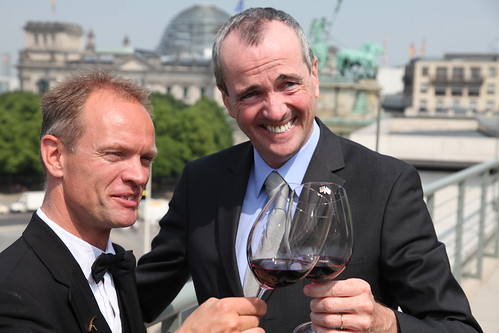If we’ve learned anything from the ‘Judgment in Paris,’ it is that competition is a good thing and it pushes producers to improve their products overtime. On May 20, the Wine Institute of California partnered with the U.S. Department of Agriculture’s (USDA) Foreign Agricultural Service (FAS) office in Berlin to celebrate the 35th anniversary of the ‘Judgment in Paris’.
The tasting in Germany took place at the picturesque U.S. Embassy in Berlin, overlooking Berlin’s Brandenburg gate. It was led by sommelier Gunnar Tietz from Berlin’s Palace Hotel and Christine Berthold from the Wine Institute of California. U.S. Ambassador Philip D. Murphy kicked off the event, noting that global competition has made good wines available to more people than ever before. Participants included German wine trade journalists, bloggers, and culinary press.

Since 1976 when the wine competition began, French judges have conducted a blind tasting of top-quality chardonnay and cabernet sauvignon wines from France and California. The brainchild of a British entrepreneur, the ‘Judgment in Paris’ was a watershed event that marked the arrival of U.S. wines to international markets. At that time, the French were historically revered as being master wine-makers, and the rest of the world’s winemakers resided in their shadows. For Californian winemakers—and for winemakers around the world—the event revolutionized the industry.
The blind tasting involved two French judges, who both ranked the California chardonnay and cabernet sauvignon best in each category. As would be expected, this caused an uproar within the wine community. That 1976 tasting was not just a defining moment for California winemakers, it also invigorated the global wine industry and inspired grape growers and winemakers from unknown wine regions in Chile, Spain, Argentina, New Zealand, Australia and the great states of Washington and Oregon to expand their ambitions.
Like a good wine, the global wine market just gets better with age.

